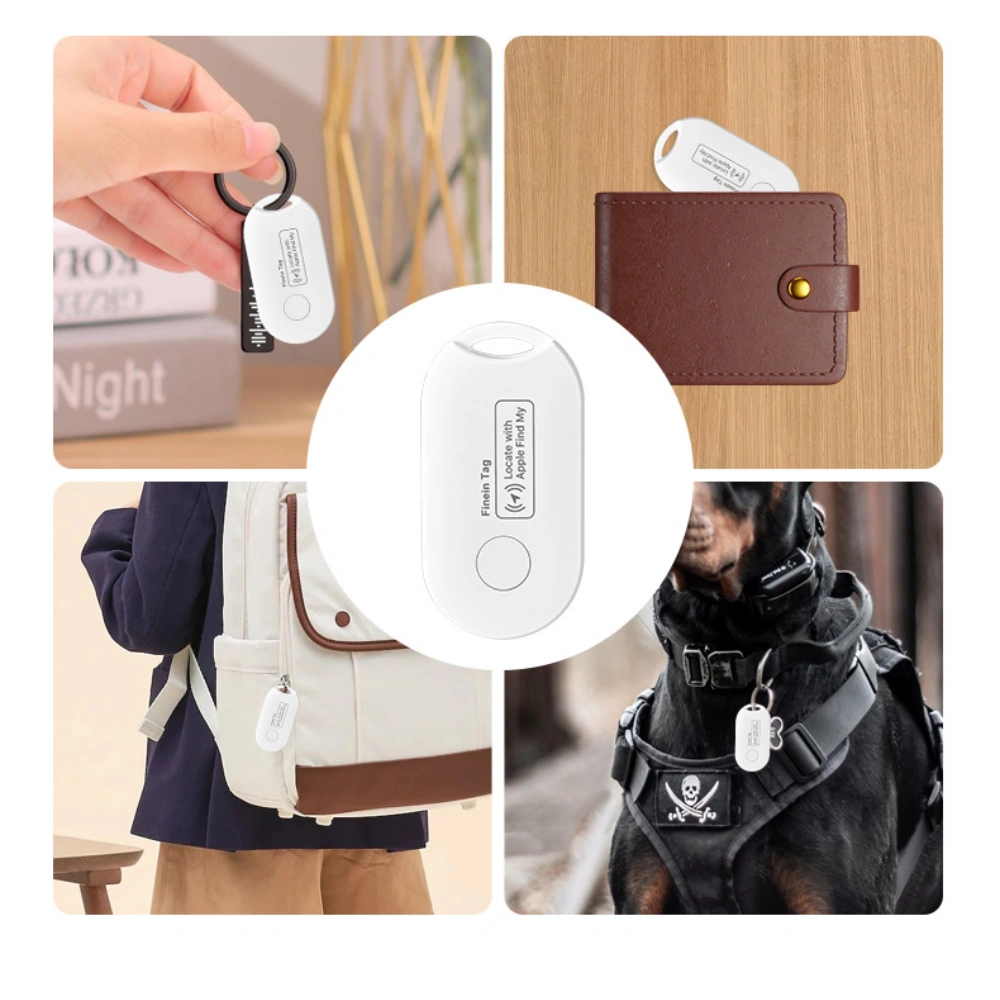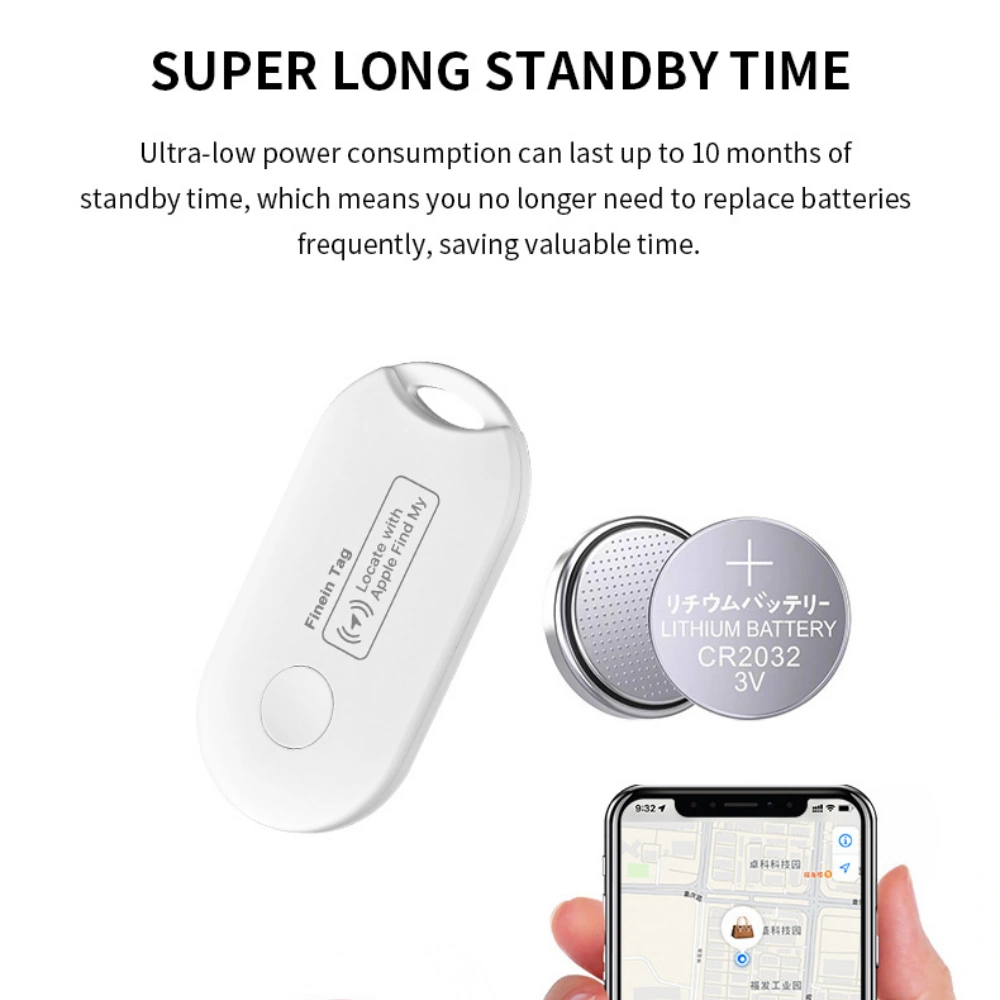Introduction: cross-platform requirements for smart tags
In everyday scenarios such as a lost key at the office, a backpack on Uber/Lyft or the occasional stray pet, smart anti-loss tags have gone from“Optional” to“Essential”. According to the 2024 Global Consumer Electronics Report, the market size of smart anti-loss tags has exceeded $8 billion, demand for products running both iOS and Android is up 45%-largely because of the“Hybrid device ecosystem” that pervades homes and teams: parents with Android phones, children with iphones, a single system Tag (Apple’s AirTag only works with iOS, Samsung’s earlier Tag only works with Galaxy Devices) doesn’t meet the need for cross-device collaboration.
![]()
With apple opening up third-party access to the Find My network and Google optimizing Find My Device compatibility, dual-system tags have gradually become the mainstream of the global market. However, faced with“System-level certification”, “Independent App support” and other different types, as well as dozens of brands of products, users often fall into the“Choose features or choose cost-effective” confusion. In this paper, we will combine the current situation and actual needs of foreign markets to provide a landing option.
What is the best dual-system Tag? The state of the market and the guide to choosing
Analysis of market status: three trends of dual system Tag
Market size and growth
North accounted for 45% of dual-system Tag sales in 2024, and Europe accounted for 30% , making it the core consumer market, with more than 65% of dual-system Tag sales under $20. The requirements of foreign users have been upgraded from“Basic anti-loss” to“Multi-functional coordination”, such as supporting UWB precise positioning, cross-platform sharing, low power consumption and long battery life, and products that can link Alexa/Google Home are preferred.
Brand landscape
High-end market: U. S. Tile, South Korea, Samsung dominate, featuring“System-level certification + multi-scenario adaptation”, the price concentrated in the 30-70 dollars;
Mid-market: Croatian Chipolo, U.S. Nomad with“Stand-alone App + smart ecosystem” as the core, $15-$30, iOS/Android adaptation at the same time, can connect Alexa voice query location;
Entry Market: The United States Anker, Belkin and other brands feature“Cost-effective”, the price of 8-15 U. S. dollars, to meet the key, backpack and other basic anti-loss needs.
Technology upgrade direction
Bluetooth 5.3 becomes standard (100m range, 30% less power) , some high-end products with IP68 waterproof (1.5 m water depth for 30 minutes) , UWB centimeter positioning (such as Samsung SmartTag 2, Ultra Tile) , battery life is generally increased to 6-12 months (CR2032 button batteries can be replaced and are available in supermarkets in Europe and the United States) .
![]()
Type of dual-system Tag: System-level vs. standalone
System-level dual-system tags (high-end preferred)
Functional characteristics
Direct access to the native networks of Apple Find My and Google Find My Device, no additional downloads of apps, and location via the mobile system’s built-in“Find” feature, support for“Global network coverage”(billions of devices from both systems can help each other, such as tags lost in New York, by uploading their location via a nearby iPhone/Android phone) .
Core parameters and pros and cons
| Dimensions | Specific performance |
| Price | $30-$70(Tile Mate 2024: $42, Samsung SmartTag 2: $55) |
| Battery life | 6-12 months (CR2032 button battery, replaceable) |
| Positioning accuracy | Bluetooth 5.3(within 10 meters) , partial UWB (centimeter level, Tile Ultra: $69) |
| Waterproof level | Most are IP67(splash-resistant and soak-resistant, ideal for rainy weather) |
Pros:
Cross-platform seamless: iPhone users with“Find My” App, Android users with“Find My Device”, the elderly and children do not need to learn new operations;
Wide network coverage: even if the tag is not within Bluetooth range (such as lost in the airport baggage check-in area) , the location can be uploaded anonymously through other devices, the data is encrypted by the system and complies with GDPR (EU General Data Protection Regulation) ;
High level of security: no need to rely on third-party apps to avoid the risk of location data leakage.
Cons:
Apple MFI certification and Google Works with Android certification, the number of products (only about 15 global brands) ;
Function Relative Foundation: only supports the localization, the sound reminder, does not have the history track, the share authority management and so on extension function.
On behalf of products
Tile Mate 2024: dual-system Native Search, 12-month battery life, IP67 waterproof, built-in key ring, can be hung on backpacks, luggage, Europe and the United States Top 1 Amazon sales;
Samsung SmartTag 2: compatible with iOS Find My and Android Find My devices, supports UWB precision positioning (only Samsung Galaxy phones can use UWB, other devices use Bluetooth) , lasts 8 months, and is suitable for Samsung eco-users.

2. Stand-alone App dual-system tags (cost-effective)
Functional characteristics
Dual-os support is provided by the manufacturer’s own apps (e.g. , Chipolo App and Anker Smart Tracker App) , which can be downloaded to iOS and Android devices respectively, there’s also support for Alexa/Google Home (the voice command“Alexa, find my keys” can trigger the tag to speak) .
Core parameters and pros and cons
| Dimensions | Specific performance |
| Price | $8-$30(Chipolo One: $18, Anker Soundcore Smart Tracker: $12) |
| Battery life | 3-9 months (some, like Belkin Secure Track: $25,6 months) |
| Positioning accuracy | Bluetooth 5.0-5.3(10-20 meters) |
| Waterproof level | Most are IP65(splattering-proof, suitable for everyday use) and a few are IP67(Chipolo Plus: $25) |
Pros:
Feature-rich: support for historical track query (nearly 30 days of location records, suitable for finding often lost laptop) , multi-sharing (up to 10 people at the same time management, suitable for family car keys) , anti-lost alert (within 10 meters from the mobile phone automatic alarm) , one-button Call (label volume up to 80 decibels, can also be heard in the noisy environment of the mall) ;
Cost-effective: entry-level only $8, suitable for multi-scene use (such as hanging for pets, to camping equipment paste) ;
Ecological linkage: can be controlled by Alexa/Google Home Voice, in line with foreign users intelligent lifestyle.
Cons:
Limited coverage: Bluetooth only (no network assistance) , no tracking beyond 100 meters (lost at highway rest stops, for example) ;
Privacy-dependent vendors: location data is stored on vendors’ servers and requires choice of compliant brands such as Tile and Chipolo (to avoid violations of data protection regulations by smaller vendors) ;
Big differences in App Experience: some niche brands have more ads and Caton, giving preference to products with an Amazon score of 4.5 or above.
On behalf of products
Chipolo One: $18, iOS/Android, 8-month battery life, IP65 waterproof, ad-free App, Google Home
Anker Soundcore Smart Tracker: $12, cost-effective, 6-month battery life, phone finder (double-tap the tab to make the phone ring) for budget-conscious users.
![]()
Dual-system tags recommended in the market: categorized by scenario
1. Home/team sharing scenarios (priority system level)
Need Pain Point: many people use different system mobile phone (such as parents with Google Pixel, children with the iPhone) , need simple operation, wide coverage positioning.
What to try: Tile Mate 2024($42) , Samsung Smarttag 2($55)
The reasons: no need to download an App, family members sharing car keys can be located using a native“Find” feature; if the tag is lost at an airport travelling abroad (such as London’s Heathrow Airport) , fast retrieval via dual-system networks.
2. Student/budget-constrained scenario (priority independent App Type)
Demand Pain Point: need low-cost, multi-function, for campus cards, notebook computers, textbooks (textbooks) anti-loss.
Recommended products: Anker Soundcore Smart Tracker ($12) , Chipolo One ($18)
Reasons: low price, support for audible reminders (let the tag ring when looking for textbooks in the library) , historical track (record the location of frequently lost teaching buildings) , App compatibility with campus WiFi, battery life for a semester (about 4 months) , it’s available in campus supermarkets in the and Europe.
3. Outdoor/pet scenes (strong protection preferred)
Pain Points: need to waterproof, anti-fall, pets (such as dogs) in the park range of activities, or camping when anti-lost tent accessories.
What to try: Chipolo Plus ($25, IP67 waterproof) , Tile Sport ($69, IP68 waterproof + 1.5-meter drop resistant)
Reasons: Chipolo Plus can be shared with 10 people (family members can check the dog’s location in the park together) ; tile Sport is great for camping and lasts 12 months, even if you’re lost in the woods, it can be located via Bluetooth (within 100 meters) .
6 key factors to consider when choosing a dual Tag

System compatibility details
Check for“True dual-os”: some products claim to support dual-os, but the Android side has no history (such as some niche brands) . It is recommended to check Amazon user reviews before buying (focus on Android user feedback) .
Location and coverage
Indoor/close proximity (e.g. looking for keys at home, textbooks at library) : Bluetooth 5.3 is sufficient, select standalone App;
Outdoor/long-distance (e.g. lost luggage at airport, lost backpack on foreign trip) : must choose system level (relying on dual system network mutual aid) .
Battery life and power supply
Button Battery: easy to replace (European and n supermarkets such as Walmart, CVS have CR2032 Battery) , life 6-12 months, suitable for long-term use;
Rechargeable: no need to change the battery, 3-6 months of life, suitable for frequent use (such as carry every day with the campus card) .
Level of protection
For everyday use (keys, backpack) : IP65 is spill resistant enough;
Outdoor/PET: At Least IP67(for short soaks) , preferably Tile Sport (IP68) , ideal for camping and beach activities.
Privacy and security
System-level: Data Encryption is handled by Apple/Google, in line with GDPR, and privacy is more secure
Stand-alone App: choose Tile, Chipolo and other brands that clearly label“Data local storage” or“Anonymous upload” to avoid excessive information collection by small factories.
Additional features to match
Sharing requirements: choose to support“Rights management”(such as to roommates“View permissions”, not to“Modify permissions”) , Chipolo App to support this feature;
Intelligent linkage: if you have Alexa/Google Home, choose voice-controlled models (Tile Mate, Chipolo One)
Precise positioning: if you use a Samsung Galaxy Phone, you can choose a Samsung Smarttag 2 that supports UWB (centimeter-level positioning, good for finding the remote control in the sofa seam) .
Conclusion: there is no“Best,” only“Best Fit.”
The core of dual-system Tag selection is“Match your scene to the device ecosystem”, allowing for quick decisions based on the following user profiles:
Scenario 1: Home Hybrid + foreign travel → system level (Tile Mate 2024/Samsung SmartTag 2) , easy to operate, global network coverage;
Scenario 2: Student/single use + limited budget → independent App (Anker Soundcore/Chipolo One) , low-cost and versatile, suitable for campus scenarios;
Scenario 3: outdoor camping/pet ownership → high-protection Chipolo Plus or high-end Tile Sport, waterproof and fall-resistant to meet outdoor needs.
In the future, dual-system tags will move toward“UWB Global Positioning,”“Long battery life (24 months) ,” and“Cross-brand ecological linkages (such as connecting to Tesla’s in-car system) .” It is recommended to choose brands with Amazon’s Top 10 sales and a post-sale score of 4.0 or above (such as Tile, Chipolo, Anker) , and avoid niche products (easy stoppage leads to App removal, affecting use) .







